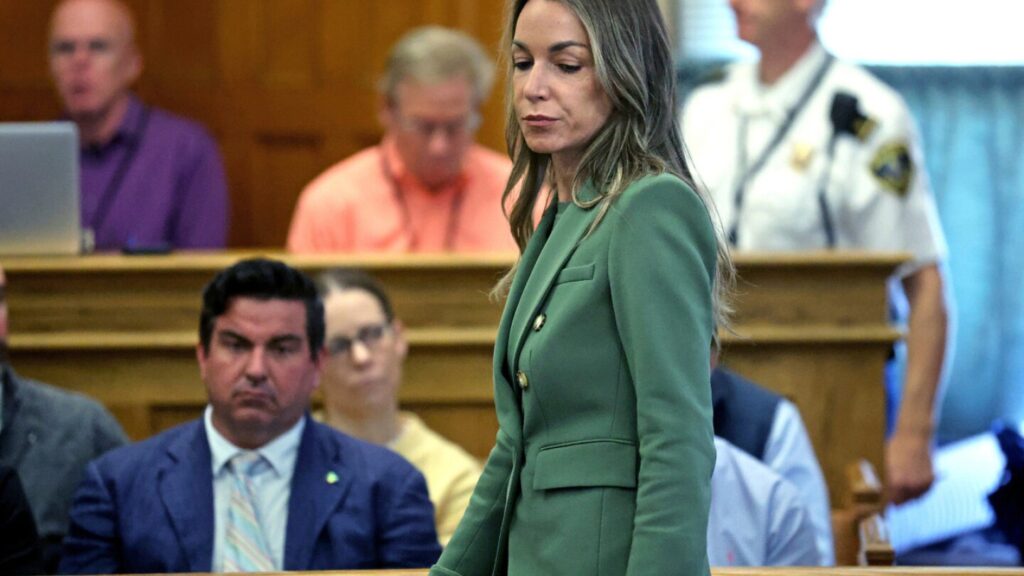A crash reconstruction expert on Tuesday provided jurors his analysis of Karen Read’s vehicle the night her boyfriend was killed in her second murder trial.
Read, 45, is accused of backing her SUV into her boyfriend, Boston Police Officer John O’Keefe, 46, and leaving him to die on a snowy night in the front yard of another officer’s home after she dropped him off at a party there in January 2022. Her lawyers say she was framed in a police conspiracy and that someone inside the home that night killed him.
A mistrial was declared last year. Read’s second trial on charges of second-degree murder, manslaughter and leaving the scene has so far appeared to follow similar contours to the first.
Vehicle data a point of contention
Before the jury was brought in Tuesday, Judson Welcher of the accident reconstruction, biomechanics and digital forensics company Aperture LLC took the stand for a last-minute voir dire — a process used to determine his competency and the evidence he planned on discussing.
Specifically, Read’s defense attorneys pressed Welcher on changes made to a PowerPoint presentation Welcher was expected to give to the jury. Welcher said he “removed a couple words” from some of the slides and had talked to prosecutor Hank Brennan, who suggested edits to the presentation.
Welcher added that he also amended the PowerPoint after his colleague, Shanon Burgess, found “better data” surrounding when Read was maneuvering her SUV on the night O’Keefe died.
Read’s lawyers had previously attempted to block Burgess’s report from being presented to jurors and Aperture experts like Welcher from testifying. They accused the prosecution of committing a pretrial discovery violation. But Judge Beverly Cannone let the prosecution proceed.
Expert says Read accelerated in reverse
Much of the trial has focused on broken taillight pieces involving Read’s SUV, but the prosecution’s latest focus has been on the forensic experts who have analyzed data pulled from the vehicle and O’Keefe’s phone in an attempt to map out exactly where Read’s SUV was the night her boyfriend died.
Specially, the prosecution has brought in experts to discuss a secure digital card on a circuit board of Read’s SUV modules that was not found in the initial investigation. The card details time-stamp data about when the vehicle was powered on and off both before and after O’Keefe’s death.
When the Lexus is powered on, an internal clock begins running like a stopwatch. When the car performs a maneuver like a three-point turn or backing up, a time stamp is created.
According to Welcher, Read’s SUV made a three-point turn and then backed up roughly eight minutes later. Welcher said Read must have had “three quarters of a full throttle” on the gas pedal when the vehicle moved more than 50 feet (15 meters) in reverse the night O’Keefe died.
Welcher also showed video of him reenacting how O’Keefe may have been hit by Read’s SUV. Welcher said he did so after learning he was the same height and similar weight as O’Keefe. The video shown to the jury included Welcher standing behind a similar type vehicle that had blue paint on the taillight. When the vehicle backed up, Welcher said blue paint ended up on his arm in the same areas where O’Keefe had injuries. However, Welch cautioned that “small changes in the pedestrian position gave you huge change in the output.”
Read the full article here


